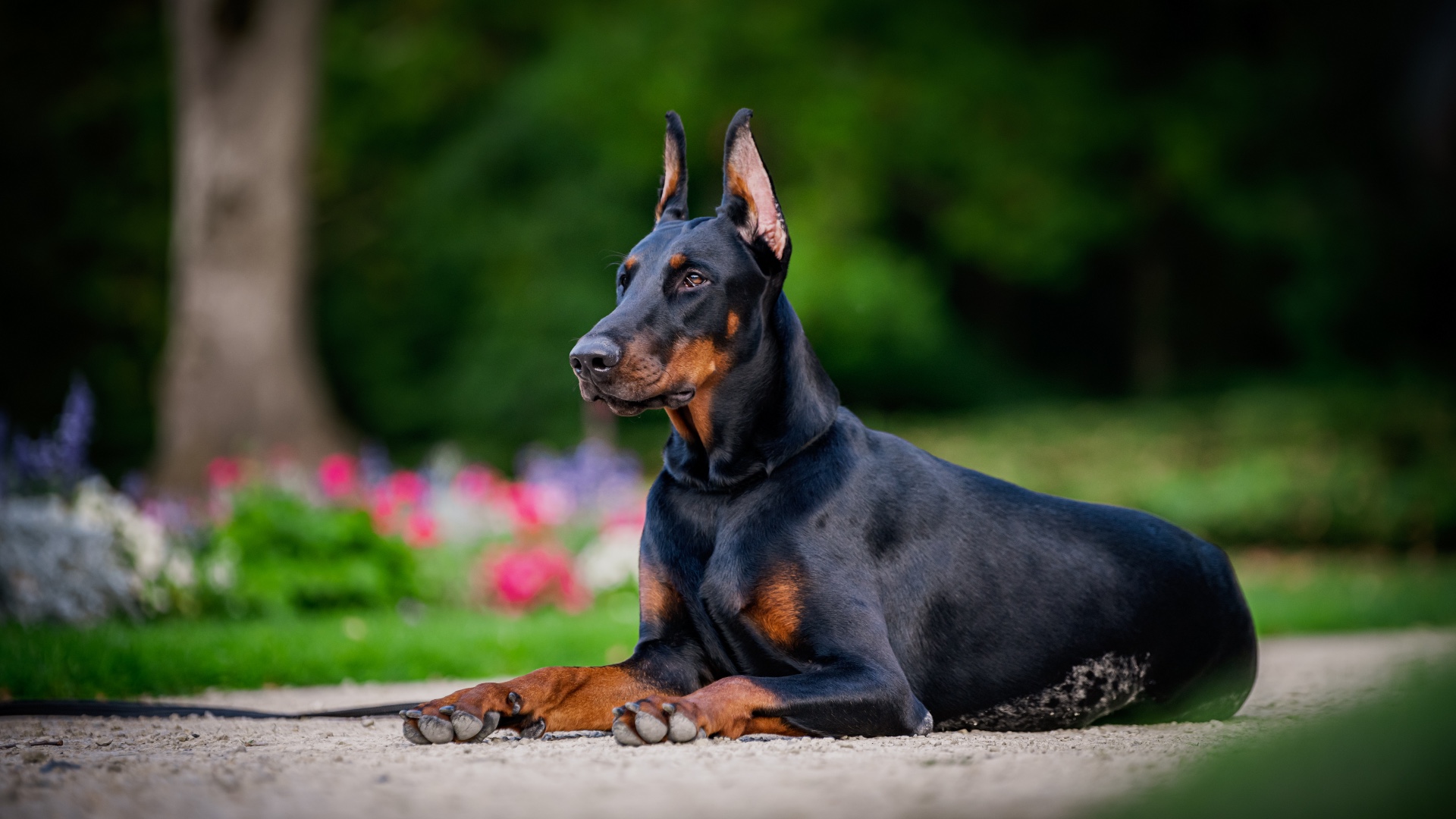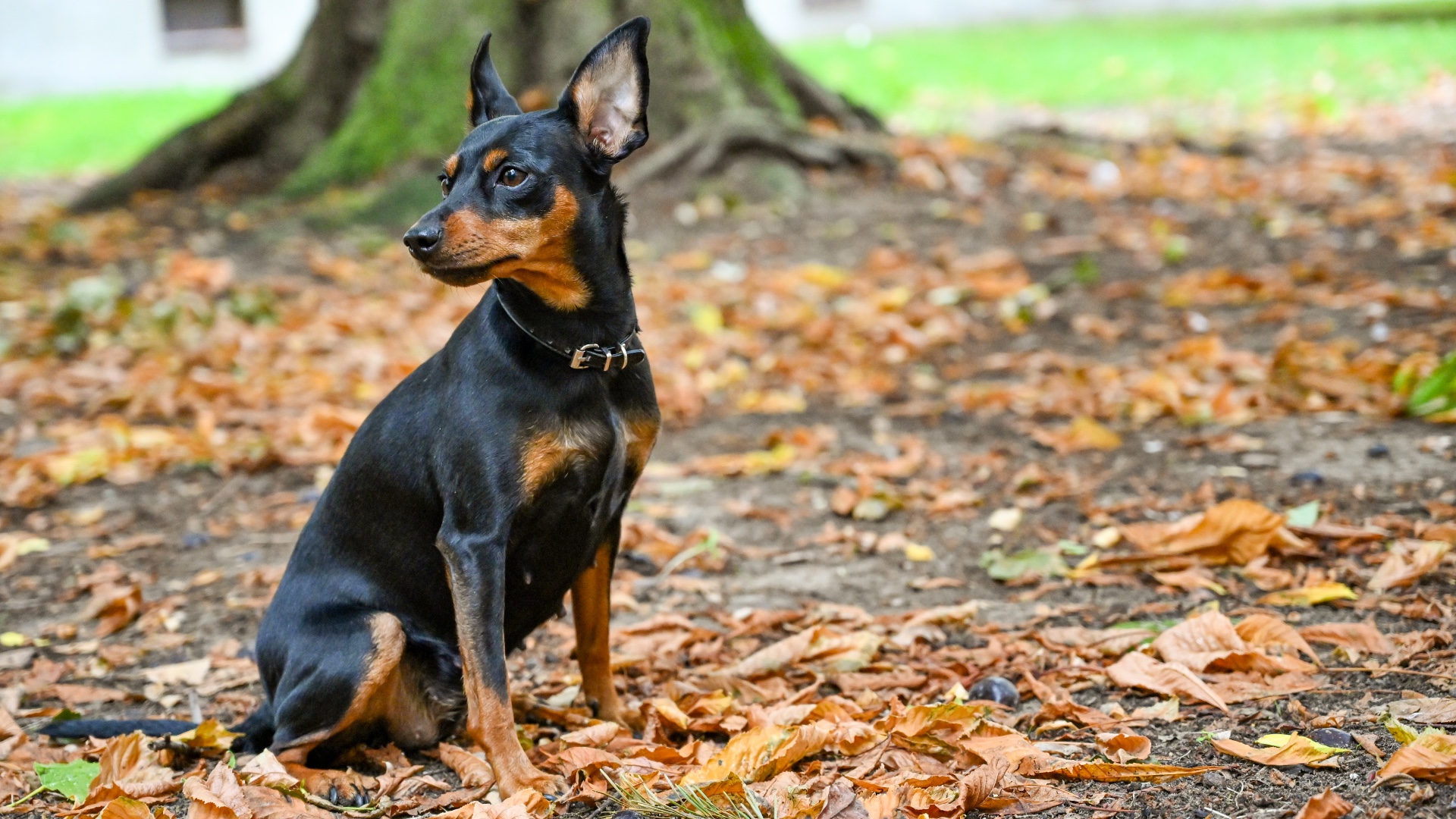10 surprising Doberman facts
They have a history of being feared, but these Doberman facts prove that these giants are more gentle and affectionate than we give them credit for

These Doberman facts may just shatter the image of this breed that many people have in their minds, so let us ask you a question: What do you picture when you imagine a Doberman? If you see an athletic dog with its ears pricked, teeth snarling, poised to attack as it’s held at the end of a leash then you’re definitely not alone.
Standing at 25-27 inches with a sleek black and tan coat and muscular build, the Doberman Pinscher, or Dobermann as it is known in some countries, may look scary, but it’s far from it. While the Doberman was bred as an aggressive guard dog and is instinctively loyal and protective, they are also a super affectionate and gentle animal that loves to be around its family.
Here are 10 facts about the Doberman to show what makes it the US’s 14th most popular canine companion.
1. It’s a relatively new breed
The Doberman was originally bred as a fierce guard dog in the town of Apolda in Germany in the early 1880s, making it less than 150 years old. However, it was only officially recognized as a breed by the American Kennel Club in 1908 and has grown in popularity ever since. Today the breed is less tough and more refined than when it started, but it’s just as regal and makes for an equally good protector and companion.
2. They’re the fifth smartest dog
According to a study carried out by canine psychologist Stanley Coren, Dobermans are the fifth smartest dog breed (this is after the Border Collie, Poodle, German Shepherd and Golden Retriever). The research was based on the breed’s ability to learn a new command and obey it. On average they learn five times faster than other breeds and can learn up to 50 words of the human language. While they do need a firm handler and to know who’s in charge, if handled properly, Dobermans are generally easy to train because they aim to please their owner.
3. They love to work
As a working dog, the Doberman is highly active and enjoys having a job to do – just make sure this bundle of energy has enough space and gets enough exercise. The breed has been used as a police dog not only because it is smart and looks intimidating, but because it’s fast. Dobermans can run up to 32 miles per hour – perfect for apprehending criminals on the run. The guard dogs were also used in the military and as service dogs because of their protective instincts.
4. Their fierce reputation isn’t deserved
While these dogs were bred to be aggressive and will defend you if provoked, they are a gentle and loving breed. Over the years they have had their toughness bred out of them, and, while they still have protective instincts, they also have a softer side. As long as they are trained properly and socialised from an early age, the Doberman can make a great family dog. They love to be involved with everything the family is doing and will enjoy cuddles with you and your kids.
Get the best advice, tips and top tech for your beloved Pets
5. They were bred by a tax collector

The Doberman was bred by tax collector Herr Karl Louise Dobermann from the town of Apolda. As a taxman Dobermann was not popular, worked late shifts and carried a lot of money on him so, aware of the dangers his job presented him, he needed a guard dog to protect him, but he also wanted a companion by his side. The Doberman is one of the only dog breeds that has kept the name of its founder (although the double n at the end is often dropped).
6. The breed is a bit of an unknown mix
Not much is known about the Doberman’s ancestry or what breeds were bred to create this incredible working dog, but it is believed they originated from a mix of breeds including the German Shorthaired Pointer, the Rottweiler, Weimaraner, Manchester Terrier, Great Dane, Beauceron, Black and Tan Terrier, and Greyhound.
The Doberman comes in four colours. The most common is black and tan, but it can also be found in fawn and tan, blue and tan, and liver and tan.
7. Their ears and tails were often docked
Dobermans are actually born with long tails and floppy ears and not the short tails and pointed, erect ears that they are known for. Because they were bred as guard dogs, their tails and ears were often cropped because these were thought to be too vulnerable to attack. Long tails and ears could be used to pull them to the ground. While this still happens today, the practice is controversial. It has been banned throughout most of Europe and the American Veterinary Association is also opposed to it.
8. They were the first canine war heroes
Dobermans were used in both the First and Second World Wars to help guard soldiers and seek out danger, such as mines. In 1994 at the Battle of Guam, a Doberman named Kurt became the first canine casualty of WWII. The brave mutt was killed by a grenade as he ran to warn troops about the approaching enemy. Kurt was the first dog buried in the United States Marine Corps War Dog Cemetery.
9. They know the drill
The first Doberman drill team was started by Tess Henseler. The military drill team was made up of 22 marching people and 18 well trained Doberman Pinschers. They performed a march routine at the Westminster Kennel Club Dog Show in Madison Square Gardens, New York in 1959. The drill teams performed at various sporting events and celebrations and showed off the dogs’ agility and intelligence. It highlighted how hard they worked and offset their negative reputation.
10. They hate the cold
The short-haired Doberman has very little body fat, which makes it sensitive to the cold. If you are walking them in the cold you may want to take a doggy sweater. They are not fans of the cold or the rain and will often refuse to go out. But beware! It’s not only the cold. When it’s hot, heat stroke is common with this breed because of its black coat. Keep to the shade, mist your dog with water or bring a cooling vest.
The Doberman Gang
Dobermans have had starring roles in a number of films, but the most famous is probably 1972’s The Doberman Gang. The film is about a crook who trains six Dobies to rob a bank. The Doberman’s reputation has changed a lot since its release, but one thing is for sure – the only thing this breed will be stealing is your heart.
Read next: European Doberman vs American Doberman.

